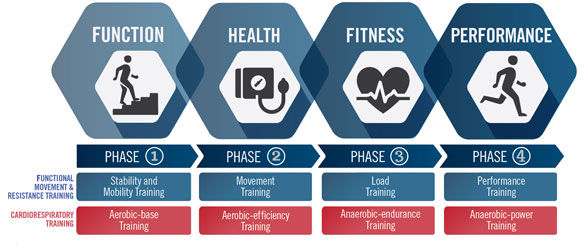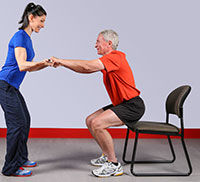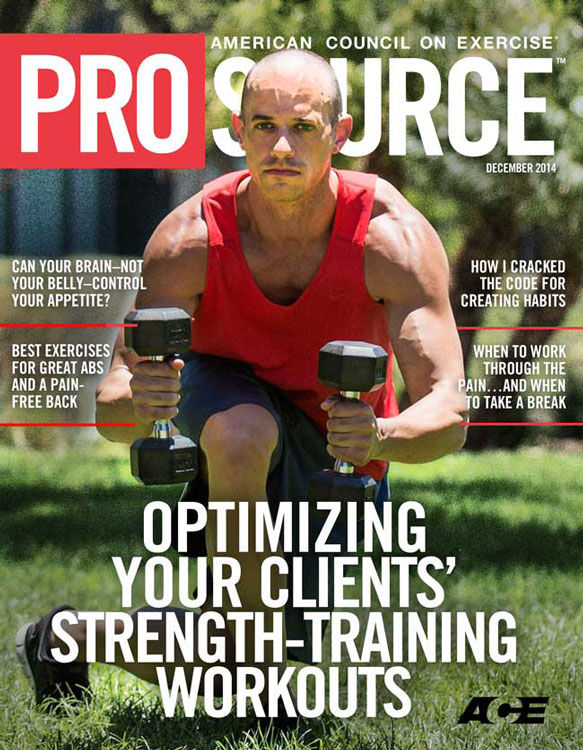
Long before any fitness-related business opens its doors for the first time—whether it is a small personal-training studio or a brand-name franchise—a series of brainstorming sessions take place. Entrepreneurs analyze the demographics of the local community and current and potential sources of competition. They evaluate market share, traffic flow and the availability of parking. And they investigate the expendable income of the members of the community and work with a commercial realtor to find the best location, location, location.
That is all essential information to have before opening any new business, but fitness professionals should also do an evaluation of themselves, their expertise, their passion and their training philosophy before beginning a new venture. Unless the plan is to open a huge 24-hour facility with cardio machines stretched out to the horizon—and there is certainly a place in the fitness industry for such facilities—a new business owner has to figure out what will make his or her facility unique in the community. This same concept holds true for trainers working as independent contractors. In the quest to identify how to attract new members—to your facility or your training schedule—and then retain their business, fitness pros would be wise to consider what makes people start exercising and then adhere to their programs. In other words, the acquisition and retention of customers can be effectively driven by your training model, which should not only be fun and inspiring, but also provide tangible progress that will keep your customers coming back for more.
If you’re like most fitness professionals, you likely embarked on your careers out of a passion for helping people improve their health, wellness or performance. Cris Dobrosielski, ACE Certified Health Coach, author of Going the Distance and owner/operator of a San Diego–based training studio called Monumental Results, believes the identification of one’s training model is part of the fundamental process that drives a business. “If the answer to the question, ‘What’s my training model?’ is at all unclear, you’re going to struggle,” says Dobrosielski. “You have to be able to articulate how you’re different, and why your model is better than that of the competition.”
Dobrosielski sees training models as existing along a continuum, with one end being the big-box gyms that provide little direct guidance to their members and the other being clinical facilities with an extremely hands-on approach. Somewhere in the middle are YMCA-style facilities and local gyms that offer some small-group training options and a variety of classes at different levels. So, the question you must answer is:
Where on that continuum does your expertise lie?
The ACE Integrated Fitness Training® Model
Over the past few years, and the course of several manuals, ACE has developed and improved upon its ACE Integrated Fitness Training® (ACE IFT®) Model. As described in the ACE Personal Trainer Manual (5th ed.), “the ACE IFT Model is a comprehensive system for exercise programming that pulls together the multifaceted training parameters required to be a successful personal trainer. It organizes the latest exercise science research into a logical system that helps trainers determine appropriate assessments, exercises and progressions for clients based on their unique health, fitness, needs and goals.”
With that in mind, if the goals of an individual fitness professional and a fitness business are essentially the same—to attract newcomers and keep them coming back for more—doesn’t it make sense to leverage something like the ACE IFT Model to inform your business model?
Asheville Family Fitness Physical Therapy and Spine Center took just such an approach in developing their business, though owner Damon Rouse, P.T., OCS, was looking at things from a more clinical perspective. His goal was to expand upon his physical therapy business in a way that would allow his former patients to continue working toward better health and fitness with expert leadership and true continuity of care. The starting point for Rouse was Gray Cook’s Functional Movement Systems, a screening tool that evaluates fundamental movements, motor control within movement patterns and competence of basic movements uncomplicated by specific skills. It helps determine the greatest areas of movement deficiency and reveals limitations or asymmetries that can then inform exercise programming.
“I knew the core of the business model had to be built from a screening tool to allow my patients to turn into facility members,” says Rouse. Most members, whether or not they are former patients in the physical therapy clinic, undergo an 11-movement screen based on Cook’s system. They are then placed into a four-level system that mirrors the ACE IFT Model (Figure 1). “My vision was to use small-group training and ‘workout buddies’ to drive retention through both enjoyment of the classes and progress through the training levels,” says Rouse.

While your training model may not perfectly align with the ACE IFT Model, the lesson learned from Asheville Family Fitness is that one’s training philosophy and the needs of the clients you serve or are hoping to serve should be at the very core of your thinking as you develop a business plan. Simply buying a variety of equipment, offering summer discounts and opening your doors will likely not be enough to attract new customers. Every element of business planning should grow from a foundation of “How will this help my clients succeed?” Remember, client success equals business success.
Results = Retention
The four small-group training levels at Asheville Family Fitness in many ways mirror the continuum used in the ACE IFT Model—function, health, fitness and performance. To illustrate how results drive member retention at their facility, Fitness Manager and ACE Certified Personal Trainer Tricia Strong offers the following breakdown of the training levels and how a member can see progress by moving from one stage to the next. The squat exercise is used here to help define the focus of each stage:

Level 1: At this level, exercises include basic postural awareness and proper movement patterns, at an introductory pace. To perform a squat in a level 1 class, participants are instructed to hold onto a stable railing and slowly squat as low as they are comfortable going. Trainers typically offer a lot of cues to help with attaining proper form: feet at least hip-width apart, keep heels down, push hips back, back straight, tighten the abdominals, etc. Additionally, because participants are often seniors or have major physical limitations, trainers have them practice sitting down into a chair and then standing back up—an important functional movement to maintain or regain.
Level 2: Exercises in level 2 classes progress by adding more resistance to the proper technique and alignment established during level 1. Participants are encouraged to increase the range of motion of their squats while maintaining proper alignment, and they may hold onto something if necessary. Their ability to squat with good form while lifting only their body weight increases their leg strength, while increasing the range of motion improves their back, hip, and knee flexibility.
Level 3: Exercises become more complicated in level 3 classes and continue to challenge and develop overall strength. Intensity can become high. At this level, squats progress in challenge by adding load. Participants hold weights and medicine balls, and the squats may be complicated by an additional movement. For example, participants may squat while holding a medicine ball, then pressing overhead.
Level 4: At this level, exercises include plyometrics, agility and increased strengthening. There is no limit on what type of squat may be performed by participants: barbell squats, plyometric squats, kettlebell squats, and so on, and they are often done in a rapidly performed circuit with other exercises.
Clients seeing themselves make progress—and then being celebrated for their success—is central to both the training model and the business model of Asheville Family Fitness. Imagine an older adult or post-rehab client moving over the course of several months from a class where he is practicing sitting down and getting up from a chair to one where full-range squats are performed, then to one where he is holding a medicine ball through multiple sets. That type of concrete progression leads to tremendous client satisfaction, member retention and great word-of-mouth marketing—all business goals derived from a well-constructed training model.
Identifying Your Model for Success
Linking your training philosophy to your business model means that your success lies in the very thing that probably drove you to become a fitness professional in the first place: helping people achieve better health and get more fit so that they can improve their overall quality of life. By maintaining focus on client progress in terms of a better relationship with physical activity, improved function and tangible evidence of advancement in terms of movement quality or fitness/performance, an entrepreneur can allow his or her business to expand based largely on the success of each individual client. This, of course, leads to member retention and outstanding word of mouth, the lifeblood of any small business.





 by
by 




